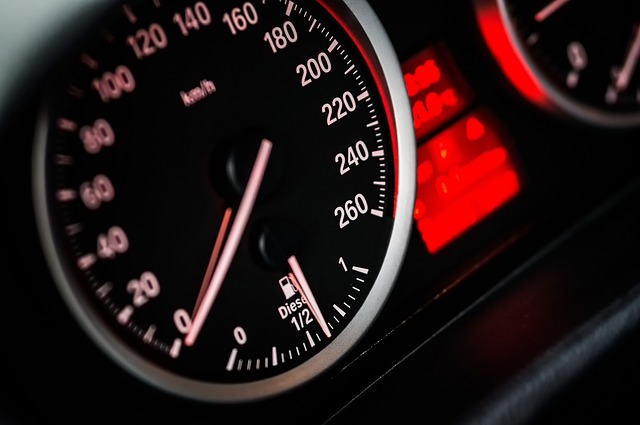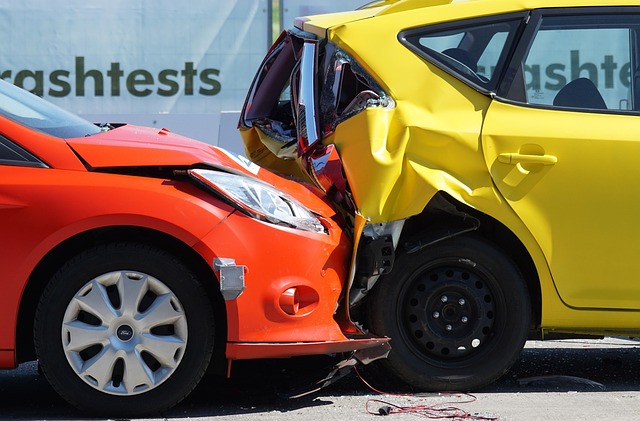Model Y Body Damage Repair: Quality Control for Long-Lasting Results
Model Y body damage repair demands meticulous techniques and strict quality control. Shops assess da…….
In today’s rapidly evolving automotive industry, the efficient and effective management of vehicle damage repair has become a critical focus, particularly with the rise of electric vehicles (EVs). This article delves into the intricacies of Model Y body damage repair, exploring its various facets, significance, and global impact. The Tesla Model Y, as one of the leading electric crossovers, serves as a prime example for understanding the challenges and opportunities in this domain. By examining its repair process, materials, technologies, and regulatory landscape, we aim to provide valuable insights into an area that is shaping up to be a game-changer in the automotive sector.
Definition: Model Y body damage repair encompasses the processes and techniques employed to restore and rehabilitate the structural integrity of a Tesla Model Y vehicle following accidental or mechanical damage. It involves meticulous work to ensure the vehicle’s safety, aesthetic appeal, and overall functionality.
Core Components:
Structural Repair: This includes fixing or replacing damaged body panels such as doors, fenders, and hoods. Specialized equipment and techniques are employed to align and weld these components back to their original specifications.
Panel Replacement: In cases of severe damage, entire body panels may need replacement. Original Equipment Manufacturer (OEM) parts are sourced to ensure precision fitting and maintenance of the vehicle’s structural integrity.
Paintwork and Finishes: Restoring the vehicle’s exterior involves meticulous painting and finishing techniques. This process ensures that the final product matches the vehicle’s original color and finish, enhancing its overall aesthetics.
Electronic Integration: As an electric vehicle, Model Y repair requires careful integration of electronic systems. Any damage to sensors, wiring harnesses, or the vehicle’s computer modules must be meticulously addressed to ensure proper functionality post-repair.
Historical Context: The evolution of body damage repair techniques has been driven by advancements in materials science, manufacturing processes, and safety standards. Over time, the industry has shifted from traditional metalworking to more advanced methods, such as precision welding and computer-aided design (CAD), to accommodate complex vehicle designs like the Model Y.
Significance: Efficient body damage repair is paramount for several reasons:
Safety: Restoring a damaged vehicle to its original structural integrity ensures the safety of occupants and other road users.
Environmental Sustainability: Proper repair minimizes the need for excessive production of new parts, contributing to sustainability goals.
Cost-Effectiveness: Efficient repair processes can reduce overall vehicle ownership costs for consumers.
Customer Satisfaction: High-quality repairs enhance customer loyalty and satisfaction, fostering positive relationships with automotive brands.
Model Y body damage repair has a significant international impact due to the global reach of Tesla and the increasing adoption of electric vehicles worldwide. Key trends shaping this domain include:
Growing EV Market: The rapid growth of the electric vehicle market, driven by environmental concerns and government incentives, is expected to increase the demand for skilled technicians and specialized repair facilities.
Regional Variations: Different regions have varying levels of infrastructure and regulatory frameworks for body damage repair. Developed countries tend to have more sophisticated repair networks, while emerging markets are investing in capacity building.
Global Standards: The automotive industry is witnessing a push towards global standards for safety and repair procedures. These standards ensure consistency in vehicle repair quality across borders, facilitating international trade.
Regional Analysis:
North America: Known for its advanced automotive industry, North America boasts well-established body damage repair facilities capable of handling complex repairs for EVs like the Model Y.
Europe: Stringent environmental and safety regulations in Europe have driven innovation in EV repair, with many countries adopting cutting-edge technologies and training programs.
Asia-Pacific: Rapidly growing economies in this region are investing heavily in automotive infrastructure, including body damage repair capabilities, to support their expanding EV markets.
The economic aspects of Model Y body damage repair are multifaceted and play a crucial role in the overall automotive industry ecosystem.
Market Dynamics: The global market for vehicle repair services is highly competitive, with independent workshops and dealership-affiliated repair centers vying for customers. The demand for specialized EV repair skills presents both opportunities and challenges for service providers.
Investment Patterns: Repair facilities invest heavily in training programs, advanced tools, and equipment to stay current with technological advancements. These investments are driven by the need to attract skilled technicians and provide high-quality repairs.
Economic Impact: Efficient body damage repair contributes to economic growth by facilitating faster vehicle turnover rates and reducing downtime for owners. It also supports employment opportunities in the automotive service industry.
Cost Analysis: The cost of Model Y body damage repair can vary widely based on several factors:
| Factor | Impact |
|---|---|
| Severity of Damage | Minor dings and scratches vs. major structural damage significantly influence repair costs. |
| Parts Availability | OEM parts may be more expensive but ensure better compatibility and quality. |
| Labor Rates | Skilled technicians in urban areas command higher rates due to higher living expenses. |
| Location | Repair facilities in remote regions may charge premium prices for their services. |
Technological innovations are revolutionizing Model Y body damage repair, offering faster, more efficient, and environmentally friendly solutions. Notable advancements include:
Laser Technology: Lasers are being used for precision cutting and welding of body panels, reducing repair time and ensuring minimal heat impact on surrounding materials.
Computer-Aided Design (CAD) Software: CAD systems enable technicians to plan repairs with greater accuracy, visualize outcomes, and streamline the fabrication process.
Robotic Automation: Robotic arms assist in repetitive tasks like welding and painting, improving consistency and reducing the risk of human error.
Advanced Materials: Newer materials, such as lightweight composites and high-strength steels, offer better crash performance and enable more efficient repairs.
Digital Imaging and Sensors: 3D imaging and sensor technology help in creating digital twins of damaged vehicles, facilitating remote consultations and precise repair estimates.
Future Prospects: The future holds immense potential for technological advancements in this domain:
Artificial Intelligence (AI): AI algorithms can analyze damage patterns, predict repair outcomes, and optimize processes, leading to faster and more accurate repairs.
Augmented Reality (AR) Training: AR technology offers immersive training experiences, enabling technicians to learn complex repair procedures in a virtual environment.
3D Printing: 3D printing of custom parts could reduce lead times and provide cost-effective solutions for rare or discontinued Model Y components.
The regulatory landscape surrounding Model Y body damage repair varies across regions but generally aims to ensure vehicle safety, environmental protection, and consumer rights.
Safety Standards: Organizations like the National Highway Traffic Safety Administration (NHTSA) in the US and the European Union’s (EU) European New Car Assessment Program (Euro NCAP) set rigorous standards for vehicle structural integrity, influencing repair procedures.
Waste Management: Strict environmental regulations govern the disposal and recycling of automotive waste, including EV components. Proper management ensures that hazardous materials are handled safely.
Consumer Protection: Laws protect consumers from unfair repair practices, ensuring transparent pricing and quality workmanship.
International Cooperation: Global initiatives, such as the United Nations’ (UN) Global Technical Regulations (GTRs), promote harmonized safety and environmental standards for vehicles across borders, simplifying the repair process.
Despite its advancements, Model Y body damage repair faces several challenges:
Skilled Workforce: The demand for highly skilled technicians outstrips supply, leading to labor shortages in many regions. Training programs must evolve to meet this demand.
Parts Availability: As EV technology continues to evolve, keeping up with the availability of specialized parts can be challenging, especially for rare or newer Model Y variants.
Environmental Concerns: The environmental impact of repair processes, particularly in terms of energy consumption and waste generation, is a growing area of concern.
Cost Transparency: Customers often face opacity in estimating repair costs, leading to dissatisfaction. Transparent pricing models are essential for building trust.
Proposed Solutions:
Industry Collaboration: Automotive manufacturers, repair shops, and regulatory bodies should collaborate to develop standardized training programs and parts supply networks.
Digitalization: Implementing digital platforms for parts sourcing, repair documentation, and customer communication can enhance efficiency and transparency.
Sustainability Initiatives: Adopting eco-friendly practices and materials can minimize the environmental footprint of repair operations.
Tesla has pioneered an innovative approach to Model Y body damage repair through its in-house network of service centers. These centers are equipped with state-of-the-art facilities and trained technicians, enabling efficient repairs tailored to EV needs. By controlling the repair process, Tesla ensures consistent quality and a seamless owner experience. This strategy has fostered customer loyalty and contributed to Tesla’s market success.
Japan is renowned for its meticulous craftsmanship in automotive repair. Japanese technicians have perfected precision repair methods for complex body damage, ensuring minimal material wastage and precise alignment. This expertise has influenced global standards, with many repair facilities adopting similar techniques to enhance their capabilities.
With the advent of advanced communication technologies, remote assistance in Model Y repairs has gained traction. Technicians can now collaborate with experts located remotely, leveraging real-time data and video conferencing to troubleshoot and guide complex repairs. This approach expands access to specialized knowledge while reducing on-site labor costs.
The future of Model Y body damage repair is poised for significant growth and transformation:
Growing Market Penetration: As electric vehicles continue to gain market share, the demand for specialized repair services will increase, driving investment in training and infrastructure.
Digitalization Advancements: Digital technologies will play an even more integral role, enabling remote consultations, virtual reality (VR) training, and paperless documentation.
Sustainability as a Focus: The industry will prioritize eco-friendly practices, including the use of sustainable materials, efficient energy systems, and closed-loop recycling programs.
Artificial Intelligence Integration: AI will revolutionize repair processes, from predictive maintenance to automated quality checks, leading to faster turnaround times and improved accuracy.
Model Y body damage repair is a dynamic and evolving sector within the automotive industry, influenced by technological advancements, global trends, and regulatory frameworks. As electric vehicles continue to shape the future of transportation, efficient and sustainable repair practices will be paramount. By addressing challenges, embracing innovations, and fostering collaboration, the industry can ensure that Model Y repairs meet the highest standards of safety, quality, and environmental responsibility.
Q: How does the repair process for Model Y damage differ from conventional vehicles?
A: The primary difference lies in the unique considerations for electric vehicles, such as addressing battery pack integrity during structural repairs and ensuring proper integration of electronic systems.
Q: Are there specialized tools required for Model Y body damage repair?
A: Indeed, specialized tools are essential, including robotic welding machines, precision measuring instruments, and advanced paint mixing systems tailored to EV applications.
Q: Can I perform minor Model Y repairs on my own?
A: While some basic repairs may be manageable for DIY enthusiasts, complex structural or electrical repairs should be left to certified technicians due to safety and quality concerns.
Q: How can I find a reputable repair facility for my Model Y?
A: Research is key. Look for facilities with industry certifications, positive customer reviews, and experienced technicians. Online platforms and local automotive forums can provide valuable insights.
Q: What are the environmental benefits of efficient body damage repair?
A: Efficient repair processes reduce the need for excessive production of new parts, minimizing resource consumption and lowering the carbon footprint associated with vehicle repairs.

Model Y body damage repair demands meticulous techniques and strict quality control. Shops assess da…….

Assessing and repairing Model Y body damage requires a structured process by certified technicians……..

When repairing a Tesla Model Y, differentiating between structural and cosmetic damage is vital for…….

The Model Y body damage repair process is a meticulous, multi-step procedure starting with an extens…….

The Tesla Model Y, while aesthetically appealing, is susceptible to urban damage from obstacles and…….

Long-distance travel in a Tesla Model Y exposes it to environmental hazards, causing body damage lik…….